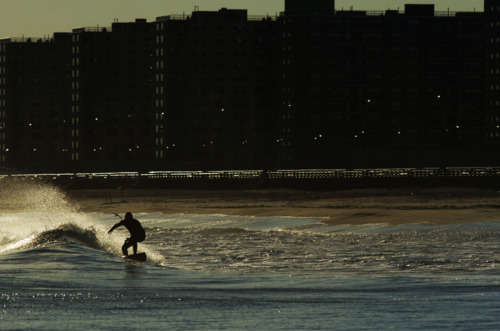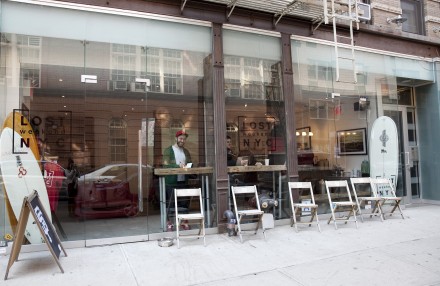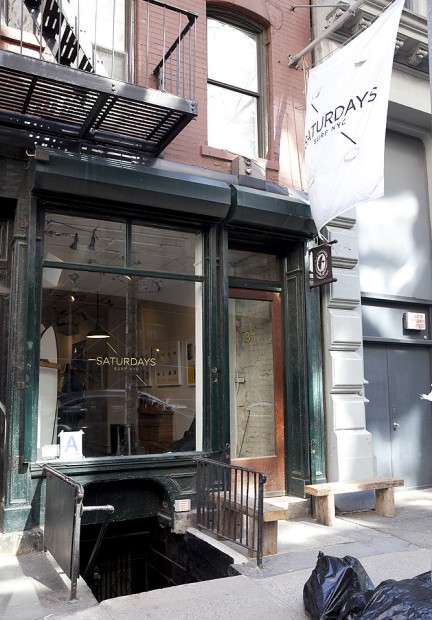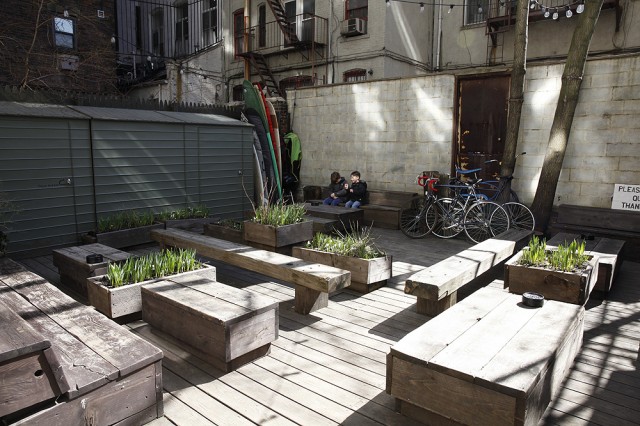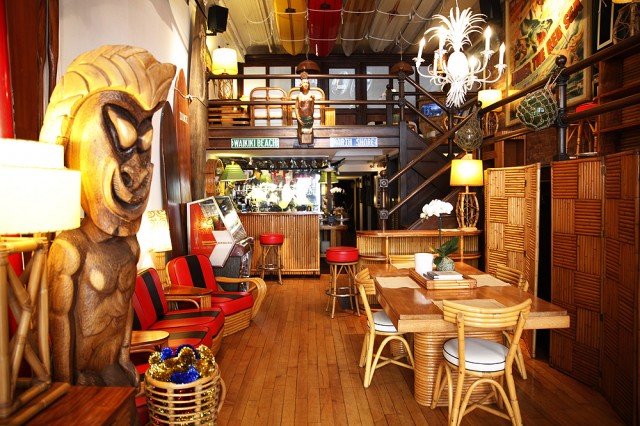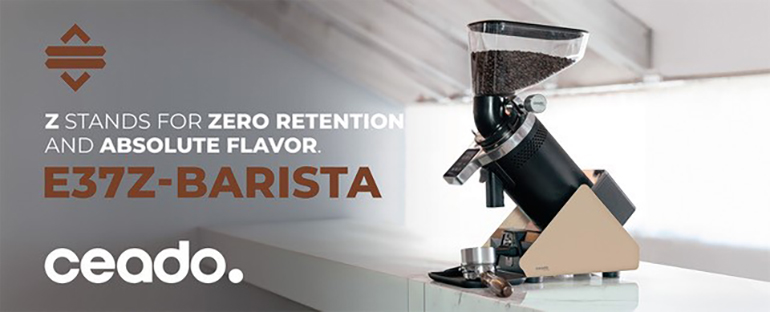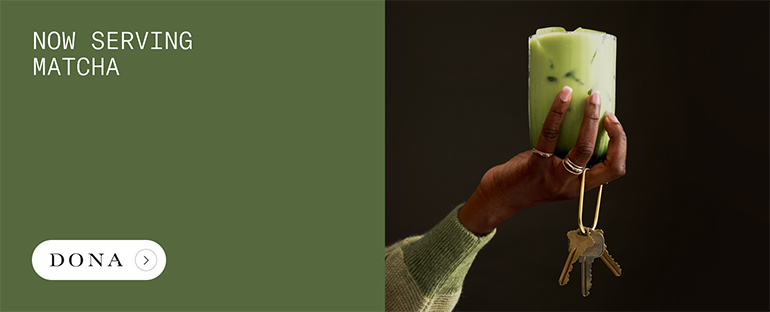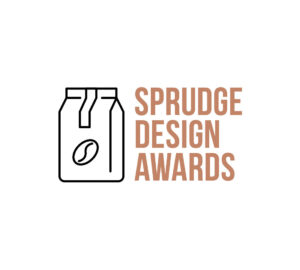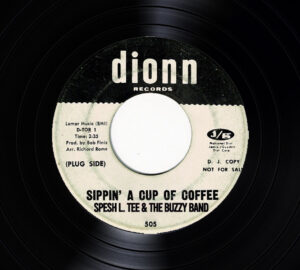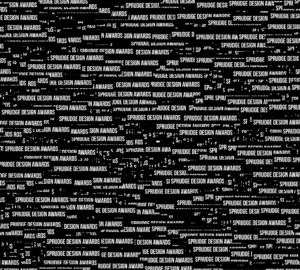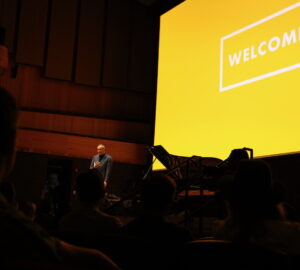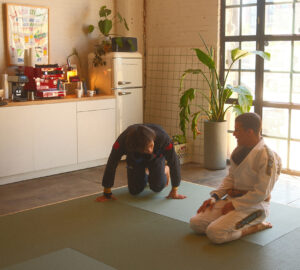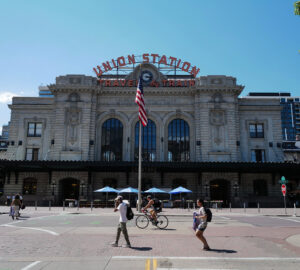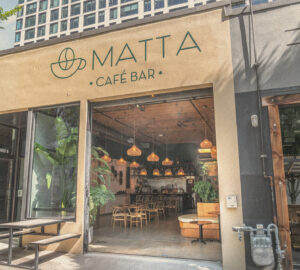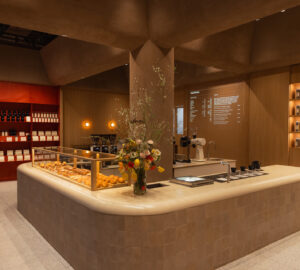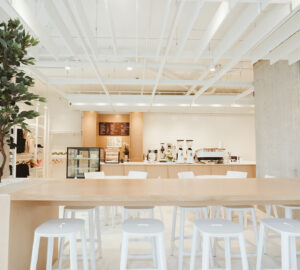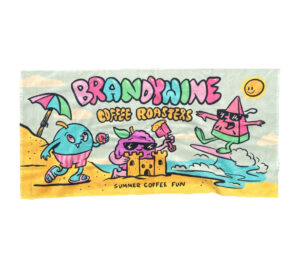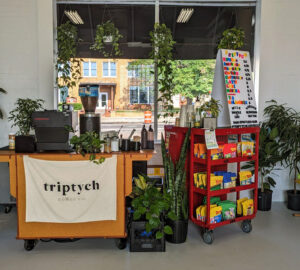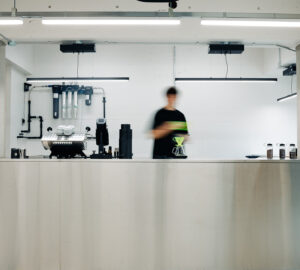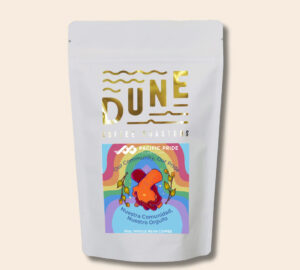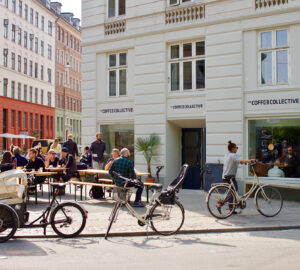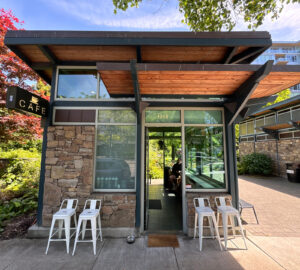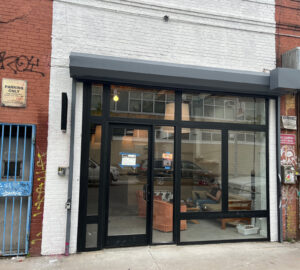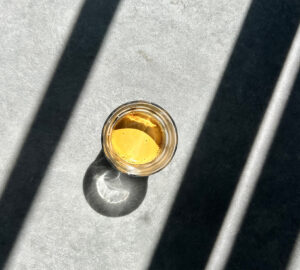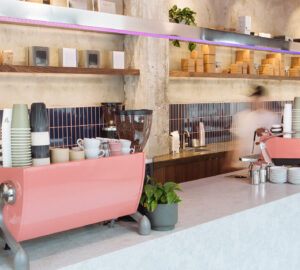It is said that Manhattan has one of everything, though I’ve often thought that it does lack at least one thing: true specialty coffee “cafes” that present like the ones I grew up with on the West Coast. Manhattan has tiny espresso bars, hectically bustling coffee shops, lavish chain stores, a few exemplary restaurants, and a few old school sit-down institutions (mostly serving terrible coffee), but there are few if any places that really combine high quality coffee with the “chill” vibe of a neighborhood cafe.
I don’t think I’m the only Pacific Northwesterner who fell in love with coffee because of formative years spent “chilling” in cafes. Meeting up at a cafe and just kicking it was a way of life, a start, interlude, or end to another day of chilling with your friends, as the vernacular goes. Relaxed, indeterminate time spent in good company was the heart of the cafe for me–whether it was languorous sun-soaked people watching seated in the massive windows at Bauhaus, or half-heartedly poking on my laptop between conversations at the Victrola on 15th, or hitting up Milstead & Co for the all important post-Paseo single-origin drip come-down.
Manhattan has a scant few of these sorts of spaces for chilling. What it does have, however, is not one, not two, but three surf-themed specialty coffee shops. They are Lost Weekend, Saturday’s Surf and Bikini Bar, all located within less than a mile of each other, all going all-in with the surf shop and espresso model. You can walk easily between the three.
Why? What does the surf vibe have to offer coffee culture in Manhattan? There are plenty of other coffee niches that have yet to be filled, and besides, it’s not like you see Manhattan-themed coffee shops in Santa Cruz. And why does lower Manhattan specifically have three of them? Does that tell us anything about Manhattan’s lack of cafes? To answer these questions, I decided to visit all three shops with Jasmin Chun, a photographer and barista at Sweetleaf, who just so happened to have grown up in Hawaii. We chose a recent Sunday, the first convincingly sunny, but still quite cold day of what has so far been a reticent New York spring.
Our first stop was Lost Weekend, a Blue Bottle Coffee account on the Lower East Side. The surf vibe is lavishly executed, with floor to ceiling glass, concrete flooring, rustic reclaimed wood tables, burnished steel bar and tastefully worn “surf” touches. A massive video projection of real-life surfing was projected on the washed out white walls, and our pleasant, assured solo barista rocked out our drinks in front of a beautiful black and white photo of a ship on a wave. The drinks were well crafted, nutty and sweet; the milk was Battenkill Creamery out of glass jugs, the pastries looked sumptuous, and the requisite Mast Chocolate bar selection was on offer.
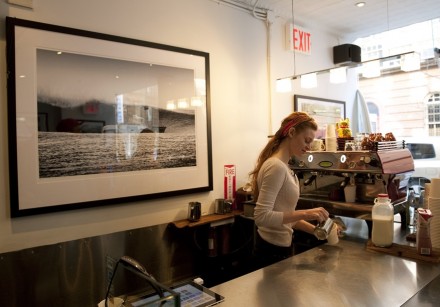
Sitting down at the heavily worn communal table, the effect was very relaxing. There’s some undeniably chill vibes going down at this space, and it’s easy to imagine that you are mellowing out in a great West Coast cafe. Lost Weekend almost transcends the self-consciousness you might otherwise find in a cafe defined by its pose.
And yet, the artifice of the vibe does glare in places. If you look for surf boards in Lost Weekend, you’ll find them propped in either front corner, on full display to the street. The boards don’t look like they are for sale, or really ever meant to be moved at all. And then you might turn and look at the left side of the cafe, and see another large table, a double of the communal one you’re sitting at, except it is covered in a meticulously curated and arranged set of commodified “surf” objects. The objects for sale are reflexive totems of a certain concept of taste, a collection of things nominally “about” surfing, but really “about” the fact that they are “about” surfing.
The reading materials for sale are: The Surfer’s Journal, WAX (“a bi-annual print publication exploring the intersection of art, culture and surfing in and around New York City”), some coffee table surf books, and fittingly, the latest copies of The Believer and Fantastic Man. A smattering of surf DVDs, some sunglasses, some skincare products and a few nice, DIY-looking (but actually somewhat expensive) leather thong bracelets round out the table. The small house line of t-shirts, tanks and board shorts are printed with a very current typographic motif meant to ape a more timeless style of nautical signage. The text on the clothing references not some place of actual surfing, but instead the shop itself: “Lost Weekend NYC”.
New York City has a supreme dexterity with referential cultural production. One of the hallmarks of this city’s service industries is their skill at spending large amounts of money to create, often out of whole cloth, fully realized retail concepts that appear, fairly seamlessly, to be an authentic part of a given cultural confluence.
But I found myself getting a little edgy in Lost Weekend, as I sometimes do in heavily produced retail concepts. Nothing but “surf” music played on the speakers, and Jasmin and I wondered if employees were ever allowed to play anything else. The entrancing, fundamentally likeable slickness of the execution contrasted with my awareness of the carefully regimented, commodified, post-whatever repackaging and appropriation of an “authentic” aesthetic that underwrote the entire space. It set my mind abuzz with questions of what power and what, if any, responsibility comes from the manipulation of cultural symbolism. That’s a topic for a whole ‘nother article, but for now, the perfectly manufactured image of “chill” at Lost Weekend gave me my first clue into understanding into why it might make perfect sense for there to be three surf coffee shops in lower Manhattan.
With all this stuff carving a cruncher in my brain, we headed off to the second spot at Saturday’s Surf flagship SoHo location. Saturday’s Surf was first opened in 2009, and it has clearly helped inform the retail concept at Lost Weekend. Saturday’s Surf is conceivably for actual surfers: walk in the door and you are greeted by a row of different surf boards, with real price-tags on them, alongside replacement fins, board waxes, bodysuits and the like tucked into every corner of the store. Compared to Lost Weekend, Saturday’s is not just an actual surf shop, it is also more convincingly a lifestyle shop “about” surfing–hanging on the wall opposite the boards are engaging enlarged prints from Saturdays Magazine, an in-house surf art and culture publication for sale alongside a large selection of surf books, magazines, DVDs, sunglasses, some candles and a small soap and skincare selection.
Just past the row of surfboards is a compact espresso bar, crafted from worn blond wood, home to a well-loved La Marzocco Linea with a quirky La Spaziale pressure dial grafted on. They’re serving espresso from La Colombe, have declined to offer pastries, but still retail the NYC-ubiquitous Mast Brothers chocolate. The coffee itself was not nearly as good as at Lost Weekend–the shots were better pulled then some I’ve had from La Colombe’s own locations, but the bitter tang of dark roast was still the dominant flavor in the cup.
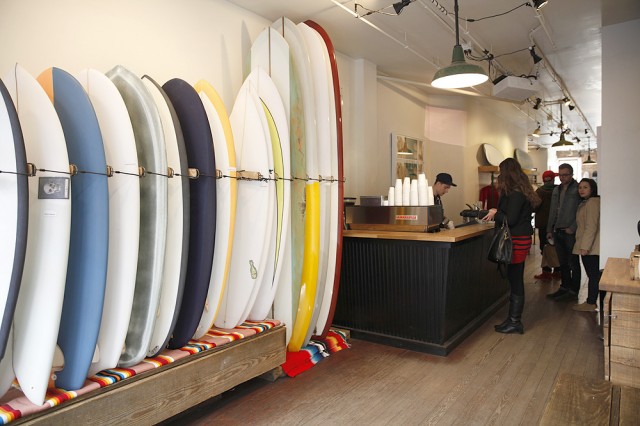
Past the espresso bar, the narrow space opens into the bulk of the retail section. Beyond the aforementioned surf supplies and literature, Saturday’s Surf has a well thought out house line of clothes, placed alongside limited edition shoes and apparel from brands like Vans. Saturday’s clothes are focused on SoCal surf attire in tasteful colors and interesting patterns, and I was particularly taken by their classic canvas high-tops updated in all-over unicolors.
Head past the retail section, out the back door, and you find the true heart of Saturday’s Surf: its gorgeous, genuinely chill patio. Covered in benches and interspersed with planters just coming to spring life, the patio somehow managed to pull in the sun despite being nestled between tall buildings on all sides. In the corner a number of surfboards and bikes leaned against the fence, and one of those little Weber charcoal grills was jammed in next to the shed.
I instantly felt more relaxed. I wanted to spend the rest of my afternoon hanging out on that patio, perhaps checking the tidal charts for tomorrow’s breaks, perhaps cutting class. I had a mental image of that grill getting casually fired up in summer, employees and customers sharing hotdogs, people whiling away their day chatting with friends.
It took me a second to realize why I reacted so strongly to the patio, but then I placed it: this patio reminded me overwhelmingly of the idyllic year I spent living and making coffee in Portland, OR, which if you didn’t know, is surely one of America’s great chill patio capitals. The outside space at Saturday’s Surf evoked the epic back patios at North Portland bars like Vendetta and The Bye and Bye, or the seats outside the Mississippi Ave location of The Fresh Pot or the Stumptown on Belmont. This patio here in New York was an oasis of chill, totally isolated from the mad crush of SoHo shoppers and tourists rushing past outside.
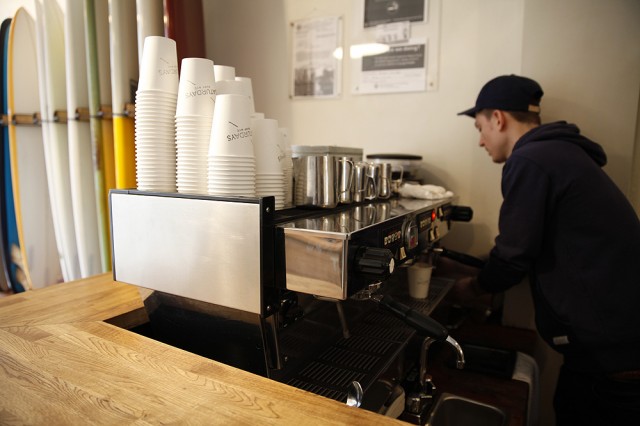
Back inside, we chatted for a bit with our barista, a relaxed, boyishly handsome twenty-something guy who lived in Greenpoint. Apparently they actually get quite busy for coffee on the weekends, and yes, he does indeed surf, as do the owners and some of the other employees. Maybe having this kernel of surf authenticity to build a community around is what makes Saturday’s feel more real. I’ve certainly always thought that the organic coming together of a particular community is something at the heart of a true cafe.
But how many people really are coming into Saturday’s Surf because they are surfers? In Manhattan? Maybe even just a few hardcore surfers coming in is enough. The Smiths were playing on the stereo, which felt effectively “mellow” without being supremely calculated like the music at Lost Weekend. A surf video was projected on the wall, but in a tiny corner up near the ceiling, compared to Lost Weekend’s wall spanning video centerpiece. It felt like a surf shop, free to be less calculated in its pose, and as a result more authentic and communal. More like an actual cafe.
Or maybe what Saturday’s really leans on is that back patio. This was my second big insight into why there are three surf coffee shops in lower Manhattan, and conversely, why there are so few “chill” cafes. In a word: space.
Manhattan rent is astronomical, and I don’t know how anyone makes any money just selling coffee, even out of postage-stamp sized places. With the addition of other retail though, Saturday’s Surf can afford to offer their customers the luxury of a relaxing space like that patio. Lost Weekend’s retail selection is smaller, but even they are able to afford a quite large facade by Manhattan standards, accommodating a long window bar and a large collection of outdoor seats. When I was in Lost Weekend I didn’t even make note of those amenities–a strong, varied interface with the street is something I take for granted in cafes. But reflecting on just how surprising and of another place Saturday’s patio felt, I realized that Lost Weekend’s generous amount of street frontage is also quite out of the ordinary for the Manhattan coffee experience.
The concept of a “chill” vibe is something missing from Manhattan coffee, and I would posit that the real or borrowed “surf” vibe at these shops is an attempt to answer for that. Saturday’s lesson shows that vibes of all forms come with certain spatial and fiduciary requirements that are very hard to achieve in Manhattan, and the additional income generated from selling more than just coffee – a web store, a retail experience – is one way to make “chill” possible. SoHo, the LES and TriBeCa are super trendy, and the surf aesthetic is apparently an easy one to marry to a coffee business.
And then we went to Bikini Bar. It was actually closed when we got there–a band was going to be shooting a music video in it a little later–but owner Aileen Oser was nice enough to let us in for a quick chat. Aileen is from Hawaii, and she and Jasmin quickly fell into talking about which high-schools they went to and where they grew up as I looked around.
Bikini Bar is straight up amazing inside. It’s like the tiki loft of your dreams, something your tikiphile Uncle Bob might have, if Uncle Bob had impeccable taste, money, and a converted factory space in Tribeca.
The level of reverence and knowledge displayed, the sheer self-assured comfort and cohesion of Bikini Bar goes far beyond kitsch – it’s a blast of mid-century island authenticity in the heart of haole Manhattan. The furniture is all comfortable, retro-island-slick matching sets, arranged for lounging throughout the ground floor and mezzanine. An old-school jukebox stuffed with beach music rests in one corner. Coffee is served from a cozy back bar, with a gorgeous image of a woman reclining in classic swimwear adorning the background mirror. Surfboards are tucked into every corner and hang from every bit of ceiling space.
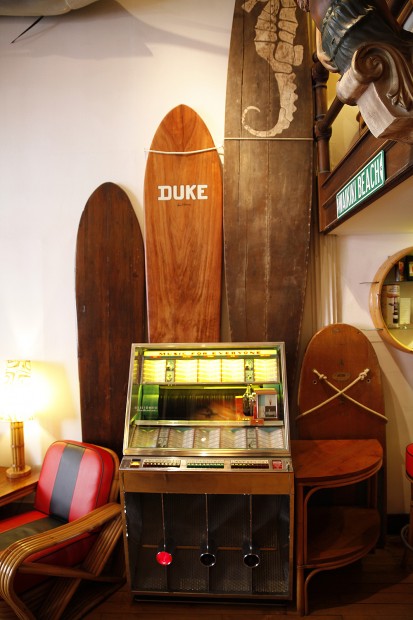
And oh, the surfboards. These aren’t the enthusiast shortboards of Saturday’s. We’re talking big boards, from every era of surfing. Bikini Bar isn’t a surfshop; it’s an altar to the island ethos, and the boards for sale are relics of that religion. These are the kinds of boards that you buy to cherish, to display with reverence, or, in some cases, boards you rent for a glamorous photo shoot. Aileen and her late husband Stuart Robert Smith started in the Bikini Bar space in 1994, a time when Aileen says surf fashion was very popular. Creative agencies, clothing lines and the like would often use their boards as props in their photo shoots or shows, and some still do today. The boards aren’t all for show though–many are meant to actually be surfed, and Aileen says she is working on a collaboration to bring a line of stand-up paddleboards to the store.
It turns out Aileen has been working on a lot of things at the store. Her trade is high-end lingerie and swimsuit design, and she operates a workshop out of the back of the space. Bikini Bar is a multi-faceted dream, from bikinis, to coffee, to paddleboards, to the raw juice Aileen plans to add, all wrapped up in this breathtaking island aesthetic. And starting in late May, Bikini Bar will play host to a specialty coffee pop-up from the team at Everyman Espresso.
I didn’t get a chance to have the coffee, but I hear it’s delicious. Even without trying the coffee, I loved Bikini Bar. I wanted to explore all the nooks, hang out there with friends, hear stories about the surfboards and delve into the jukebox’s deep selection. I wanted Bikini Bar to be my ultra-chill tiki living room.
https://www.youtube.com/watch?v=aXCOafmCyO4
Bikini Bar confirmed for me that the idea of “chill” is something that sells in New York. But Bikini Bar clearly goes beyond the economic–it is the expression of Aileen’s heart, her culture, and her life’s work. New York is a center of cultural production because there are so many brilliant, multi-faceted people in it who truly do embody the cultures they are selling, and Aileen Oser is one such person. Authenticity is complicated by commercial packaging, but not negated.
The many businesses operating out of Bikini Bar speak to the overriding problem of rent and space in Manhattan, and looking at Saturday’s Surf and Lost Weekend, it is clear to see that that problem helps motivate the desire to combine coffee with other retail. In each shop, you felt you had more space to breathe, to relax and to enjoy than you would have in a shop just selling coffee.
I started this article out by saying that Manhattan lacks for true “cafes” – this isn’t entirely true. There is the original Everyman Espresso, with its colorful baristas and shared lobby space with the CSC theatre, the Joe Coffee on Waverly with its long accumulated history, the high-volume roaster’s showroom of La Colombe at 4th and Lafayette, the Irving Farm back room zone on the Upper West Side, the original Kaffe 1668 with its quirky space and original aesthetic. These are all “cafe” settings, but even in these shops, the feel is high-energy Manhattan. You can’t escape it.
New Yorkers are not “chill” like the people I grew up with in the Pacific Northwest, but that doesn’t mean that chill doesn’t ever appeal to them, especially in those quiet liminal periods spent over a cup of coffee. It just means that you have to work harder to create it, and that you have to carve out spaces to have it. That’s why there’s 3 surf cafes in lower Manhattan – because New York City is a character in everything here, and blocking that out is an expensive endeavor. Chill ain’t cheap, and big ticket retail items help – Saturday’s Surf has boards starting at $700. That’s like 175 lattes.
Brian Wilson, the guy who wrote those surf songs throughout this piece, had a powerful water phobia. It didn’t stop him from writing the escapist surf anthems of his generation. There’s something so wonderfully out of place and poetic about that, but it makes a weird kind of sense… like a coffee bar surf shop on the island of Manhattan.
Alex Bernson is a staff writer for Sprudge.com. Photos by Jasmin Chun.











